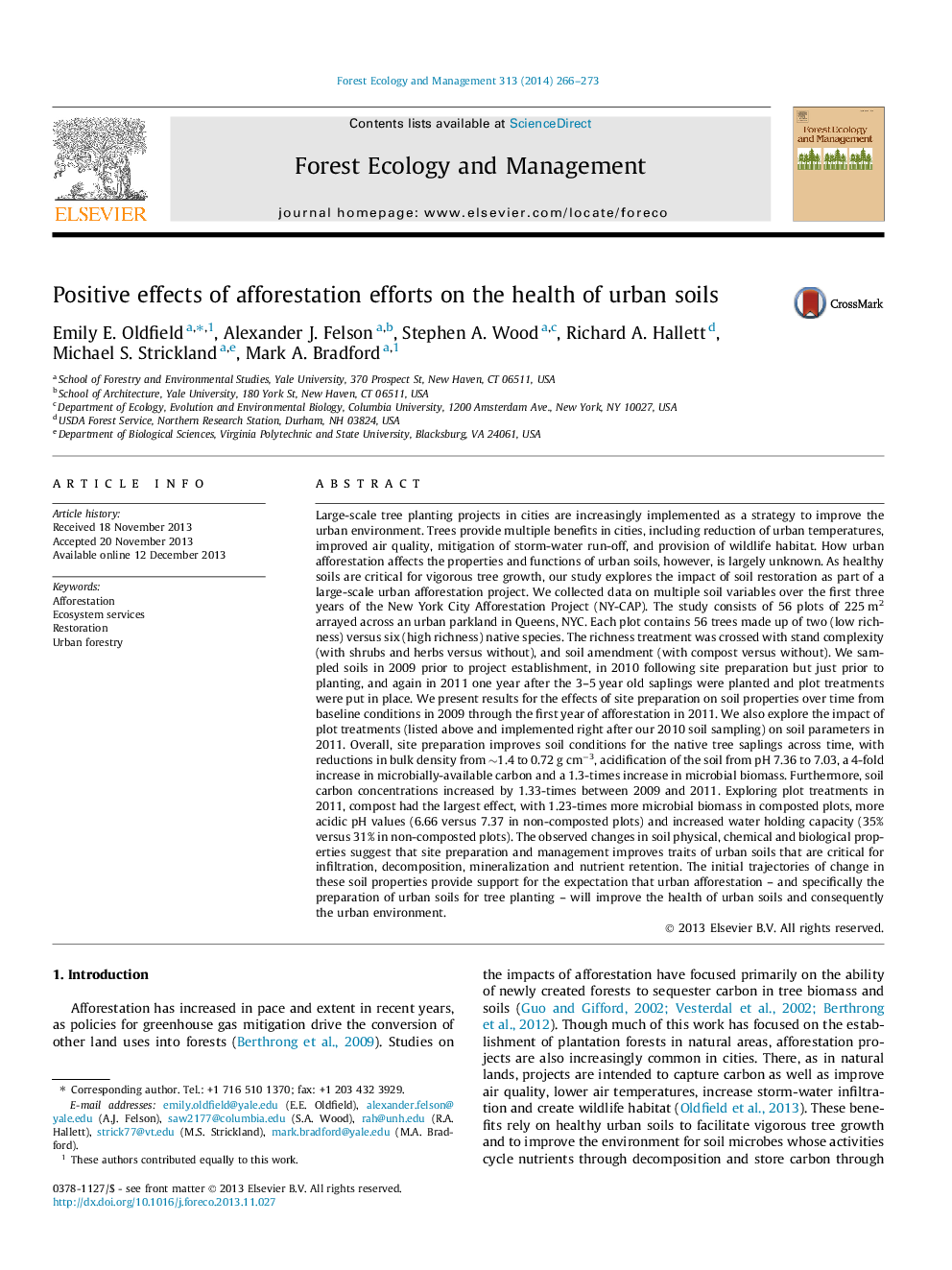| کد مقاله | کد نشریه | سال انتشار | مقاله انگلیسی | نسخه تمام متن |
|---|---|---|---|---|
| 86601 | 159199 | 2014 | 8 صفحه PDF | دانلود رایگان |
• We measure changes in soil properties of a recently afforested urban park.
• We analyzed tree performance and survival one year after planting.
• Urban soils respond positively to restoration in a manner that will support future tree growth and persistence.
Large-scale tree planting projects in cities are increasingly implemented as a strategy to improve the urban environment. Trees provide multiple benefits in cities, including reduction of urban temperatures, improved air quality, mitigation of storm-water run-off, and provision of wildlife habitat. How urban afforestation affects the properties and functions of urban soils, however, is largely unknown. As healthy soils are critical for vigorous tree growth, our study explores the impact of soil restoration as part of a large-scale urban afforestation project. We collected data on multiple soil variables over the first three years of the New York City Afforestation Project (NY-CAP). The study consists of 56 plots of 225 m2 arrayed across an urban parkland in Queens, NYC. Each plot contains 56 trees made up of two (low richness) versus six (high richness) native species. The richness treatment was crossed with stand complexity (with shrubs and herbs versus without), and soil amendment (with compost versus without). We sampled soils in 2009 prior to project establishment, in 2010 following site preparation but just prior to planting, and again in 2011 one year after the 3–5 year old saplings were planted and plot treatments were put in place. We present results for the effects of site preparation on soil properties over time from baseline conditions in 2009 through the first year of afforestation in 2011. We also explore the impact of plot treatments (listed above and implemented right after our 2010 soil sampling) on soil parameters in 2011. Overall, site preparation improves soil conditions for the native tree saplings across time, with reductions in bulk density from ∼1.4 to 0.72 g cm−3, acidification of the soil from pH 7.36 to 7.03, a 4-fold increase in microbially-available carbon and a 1.3-times increase in microbial biomass. Furthermore, soil carbon concentrations increased by 1.33-times between 2009 and 2011. Exploring plot treatments in 2011, compost had the largest effect, with 1.23-times more microbial biomass in composted plots, more acidic pH values (6.66 versus 7.37 in non-composted plots) and increased water holding capacity (35% versus 31% in non-composted plots). The observed changes in soil physical, chemical and biological properties suggest that site preparation and management improves traits of urban soils that are critical for infiltration, decomposition, mineralization and nutrient retention. The initial trajectories of change in these soil properties provide support for the expectation that urban afforestation – and specifically the preparation of urban soils for tree planting – will improve the health of urban soils and consequently the urban environment.
Journal: Forest Ecology and Management - Volume 313, 1 February 2014, Pages 266–273
